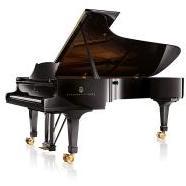Leaderboard
Popular Content
Showing content with the highest reputation on 11/24/2019 in all areas
-
I thought it would be fun if we got together and made some Christmas compositions this month. There are no rules, there are no winners, just composers appreciating each other's contributions this holiday season. If you don't celebrate Christmas, feel free to enter music for other holidays or music inspired by the holiday season. The due date is December 25th. Have fun! Also, for every piece submitted I will donate 1$ to my local food shelf. It's not a lot but if more people want to join in on pledging we could all help make a difference while doing what we love!2 points
-
I'll do something in modern/impressionist style. The song I'm leaning towards is "On This Day." Does it matter the instrumentation? Like, should we all do something in the same genre (orchestral, for example)?2 points
-
Hello, I'm new here.. ^^ I am music composer, and would like to share my stuff here with you. (Will update current post sometimes). 😉 Compose with a different genres. So here is the one of my piano track from my album 11th album "Dandelion - Piano Session" Thanks for listen, if ever.1 point
-
The suite's finally up! A lot of movements have been posted here already, but it is a different experience all the way through (if I do say so myself 🙂). Movements 3 and 5 have not been uploaded here before if you want to skip to those, though. Enjoy!1 point
-
1 point
-
This is my very first fugue-stuff that I actually was able to finish, and I would like to have some feedback of yours, good/bad, hot/cold, I can handle both, I'm here to learn! 🙂 Fughetta No. 1 I am not even sure if this is a fughetta or just an imitation or however they call it. I'm interested in any kind of tips you might have for me, especially counterpoint and fugue tips/technics in this case. Everybody have a nice day! Regards, Lotsy1 point
-
Hello, It has been a while since I have active on this forum. Please accept my apologies. I will be more so going forward. My musical projects mostly revolve around learning and applying classical "patterns" to my own work. For those who are interested in learning about these patterns, I would recommend Robert Gjerdigen's book, Music in The Galant Style, as a starting point. Listening will also help a great deal as it will enable one to learn to recognize patterns by ear, and hear how they are strung together. Galant music is very accessible, as with its simplicity as, generally speaking, the increasing complexity of counterpoint up until the 1750s was intentionally scaled back in favor of more straightforward and relatable melodies and harmony. The schematic guidance should enable the composer to produce a skeleton for the sequential events in your music. This makes it particularly useful for there will always be inspiration to draw from. How interesting you make it will depend on your character and experience. By way of illustration, I will go through one of my works with a step by step guidance on the schema used (please see attached score and visit http://openmusictheory.com/schemataSummary.html for a free reference which illustrates each schema used here). Please also consider visiting you tube channel https://www.youtube.com/channel/UCugHqLqLkl8Rwq0E7hxJDxw which contains audio examples of many schemas, or pattern discussed here: https://soundcloud.com/markus-alexander-boyd/largo-for-winds Bars 1-4: This is basically a sol-fa-mi, where the upper melody moves step wise from the 5th degree and cadences on the 3rd degree. I have varied its presentation, however, resulting in a harmony, not entirely consistent with the schematic design... Bars 5-8: This consists of a step wise ascent from the 4th to the 6th, in the clarinet, and this is to prepare for converging cadence moving the music to D Major to prepare for the second subject. To quote Robert Gjerdigen, "The converging cadence was an exceedingly popular schema and developed several sub types with characteristic features". This sub-type is one which falls from the 6th degree (of G) and closes on the 7th (or 3rd or D), whilst the bass ascends chromatically to D to resolve the passage. Bars 9-12: This is a Meyer, which I use regularly in my music due to its versatility. In its basic presentation, the the upper voice ascends from the 1st degree to the 2nd (which I treat as the question) and is answered with an ascent from the 7th to the 8th. Meanwhile, the bass moves from the 1st to the 7th, and the 2nd to the 1st respectively. Here, I varied the roles somewhat. However the basic outline is there. Bars 13-16: This is a Prinner, which presents a step-wise descent in the upper voice from 6th degree to the 3rd, whilst the bass moves 4-1 respectively. The former is played by the clarinet, however, with 7-6 suspensions. Basically, in accordance with the Prinner, the upper part descends in thirds with the bass. The bass as it does here also moves from 2-5-1 to present a convincing cadence as a standard. Bars 17-24: Here I deviate to the relative minor with suspensions over a dominant pedal in the key of B Minor. The oboe, similarly to the prinner, is descending form the 6th to the 3rd of that key, with a suspended 4th above it. However instead of resolving on the 3rd, its stops on the 4th which enables the music to return to the dominant chord of D Major. A perfect cadence in D is then prepared however the sharpened A, resolving to the B, momentarily returns to B Minor. Bars 25-29: This is Prinner, which is an elaboration of bars 13-16, which prepares for a long cadence in the key of D. Second Part Bars 30-33: Primary subject with some variation Bars 34-37: Responds with Prinner, thereby resolving the opening with a perfect cadence. Note that the cadential flourish in the upper voice descends from the 7th to the 1st degree. This is a common type of cadence used during the second half of the 18th century, which we refer today as a Cudworth cadence. Bars 38-41: This is a Fonte, which presents a convenient digression to the subdominant minor before returning to the home key of G. In its basic form, in the minor key the bass ascends step-wise from the 7-1, whilst the upper voice falls form 5-3. This movement/phrase is then repeated a step lower. Bars 42:46: This is an Extended Prinner in the key of G, which provides a useful opportunity for imitation each part. The music then modulates to the subdominant of C. Bars 46-49: This is could be treated as a Modulating Prinner, transitioning to the dominant of G, as again, there is initial step wise descent from the 6th of that key in the oboe part. However, the phrase ends on a converging cadence towards G, which provided a link to the second subject to return. The rest is essentially repeated, with exception to some added imitation towards the final long cadence from bar 66. I suppose this could be considered a conservative piece, in the sense that for the most part it adheres to some of the more common type of schema from this period. However, I do note that my music has a tendency to be idiosyncratic between baroque and classical influences. I suppose this is a reflection of my listening habits, which generally ranges from 1720-1790. My intention here is to ignite a topic on this type of music, as it proves a fascinating subject for those who love classical music, whilst offering an informed context on the traditional musical enterprise which underpins the great works of that era. Thanks for reading.1 point
-
Hello Markus! I thought I am going to give you a review too, and well, I can't.. I think it's very clear which of us can teach way more about baroque style to the other, so all I could do at the moment is to Like this and to say: Hats off, Sir! 🙂 (PS. I'm going to remember you if I stuck with a baroque composition)1 point
-
I'll join in too! I feel confident I can put together a little duet for piano and saxophone. Why saxophone? Heavens if I know!1 point
-
This is excellent. Much enjoyed your adaptation... keep posting friend1 point
-
I think this works quite well. There are times where I think he the top voice (is bar 9) could be doing something more interesting. Nonetheless you move through the different keys effortlessly and the thematic material is developed intuitively. I would also suggest is that it is lengthened. Perhaps by ternary form (with this material used as the A section) however you would need to modulate to the dominant. One thing I wish to ask is why you have opted for the name “fughetta”, which of course is Italian for fugue. Unless you are Italian, I struggle to understand your reason not to use the English translation... It depends ultimately on what you intend this piece to be1 point
-
1 point
-
I wrote a Christmas carol a couple of years ago (it's actually uploaded here.) I think that with the knowledge I have gained over the last few years, I could revise it an make it much better. It's a great idea you have here @Left Unexplained!1 point
-
I daresay I almost like this better than Beethoven's own work. My main thing is that the repeated triplets whenever there's an interval involved can feel a little heavy-handed without variation. m. 27 to the end, for example, was a nice A∆9, but that ostinato really become obsinate-sounding (which is what its English translation is), and a little too foreground for my taste by the end. Lovely work, though.1 point
-
If I have time, I'll write a little comedic 12-tone or some sort of set-theory based adaption. Short and sweet, as I think it'd be enough to give the audience a good little laugh.1 point
-
I'll also be writing an original piece. It's based on a fragment I've had in my back pocket for a while, but I'm excited to take it in this direction. My theme is "Christmas Eve." Thanks for organizing this, @Left Unexplained1 point
-
I see. Then you obviously do not require our feedback here. Good luck1 point
-
Hello Lotsy, I am new as well! As for your question about the community, I think maybe this forum is the place you are looking for? 🙂 Surely it won't be easy to find these community as there is no much interest in new piano music (unfortauntely). As for your piece, this is definitively not my genre (I don't like romantic and sweet piano music) - but in it's genre seems to work pretty well. You also use some interesting chord (hey, 0'29'', nicely done). If this is the style you are aiming at, I think you are doing great. If you aim to do more complex pieces, then the only advice I can give you (which works for me) is to find parts that you like in the works of the great masters and analyze them and try to figure out how the heck they do that. You will find that most of the tricks are not explained in the commond harmony/composition textbook, and they are actually not explained anyway. In fact, you can learn much more by analising a piece of Rachmaninoff than by reading a book on Harmony (assuming that one has enough musical knowledge for doing the analysis!).1 point
-
It's very beautiful! I like this kind of simple beauty, where one can be carried away by innocent and beautiful melodies and harmonies. The title "Daydream" is very apt for this piece. 😄1 point
-
Very Nice. I am very interested to learn more about your work Oscar - perhaps we can discuss this together in greater detail within a certain channel.1 point











